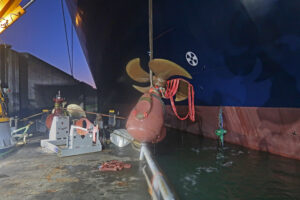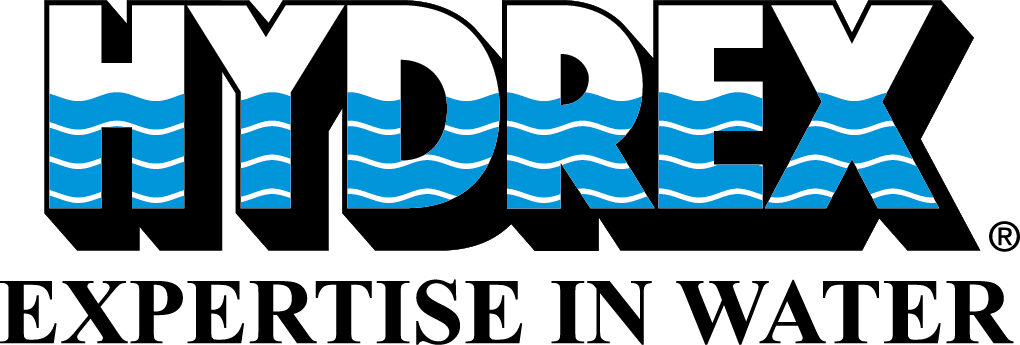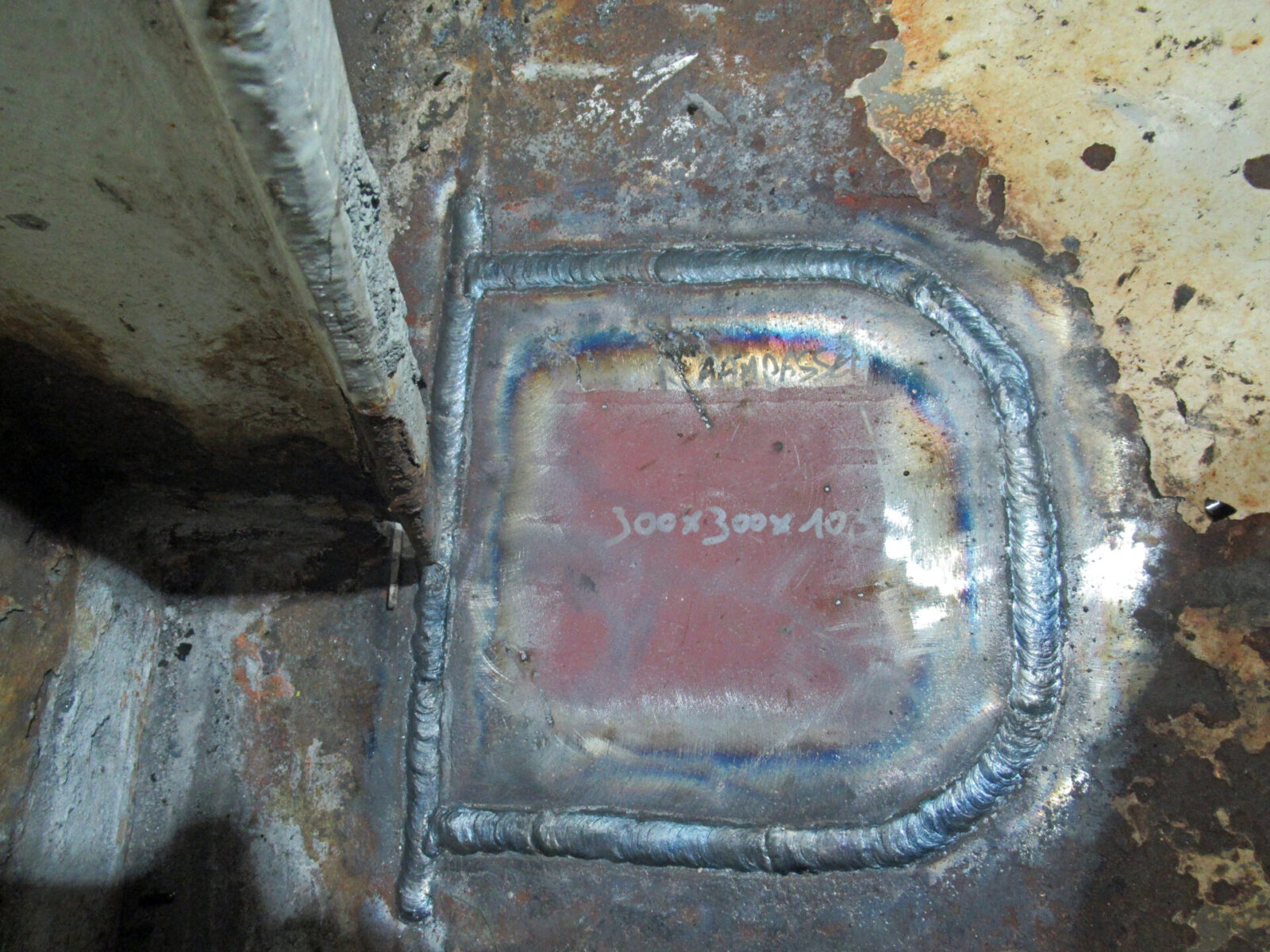Over the last few months our teams traveled across the ocean to Port of Spain, Trinidad and just around the corner from our headquarters to Zeebrugge and Amsterdam to perform hull repairs on a car carrier and two tankers. These operations illustrate the diversity of shell plating repairs our diver/technicians are trained for.
We offer class approved hull repairs combining both underwater cofferdam installation and inside dry welding. Both parts of such an operation are performed by the same team of in-house trained diver/welders working at the highest quality standards.
Insert repairs in Port of Spain
A 164-meter chemical tanker needed to have an insert installed on a damaged section of its bottom plate. A team of our diver/technicians therefore mobilized to Port of Spain, Trinidad to perform on-site repairs.
The damaged plating was underneath the sounding pipe in one of the ballast tanks. A temporary repair had been performed, but a permanent repair was needed to avoid going to drydock.
After a preliminary inspection, our divers started the insert operation by installing a cofferdam on the waterside of the affected plating. Next, they cleaned the damaged plating and prepared the area for the operation.
A round section of the damaged plating with a diameter of 200 mm was then removed. The size of this area was decided in communication with the classification society and the owner. Next our team prepared the edges of the hole for the insert, and positioned the new plate. The insert was then welded following the Hydrex procedure for insert plates, using a full penetration weld.
An independent inspector carried out ultrasonic testing and the repair was approved by the classification surveyor present during the operation. Finally, our men detached the cofferdam from the hull.
Repair in the engine room of a tanker in Amsterdam
A similar operation was performed close to home on a 144-meter oil tanker during its stop in Amsterdam. In this case the damage was situated in the ship’s engine room and an insert measuring 300 by 300 mm was installed.
The same standard procedure as in Trinidad was used. Our divers have carried out many insert repairs on all types of ships and in all areas of the hull, so they finished the operation very quickly without any delay.
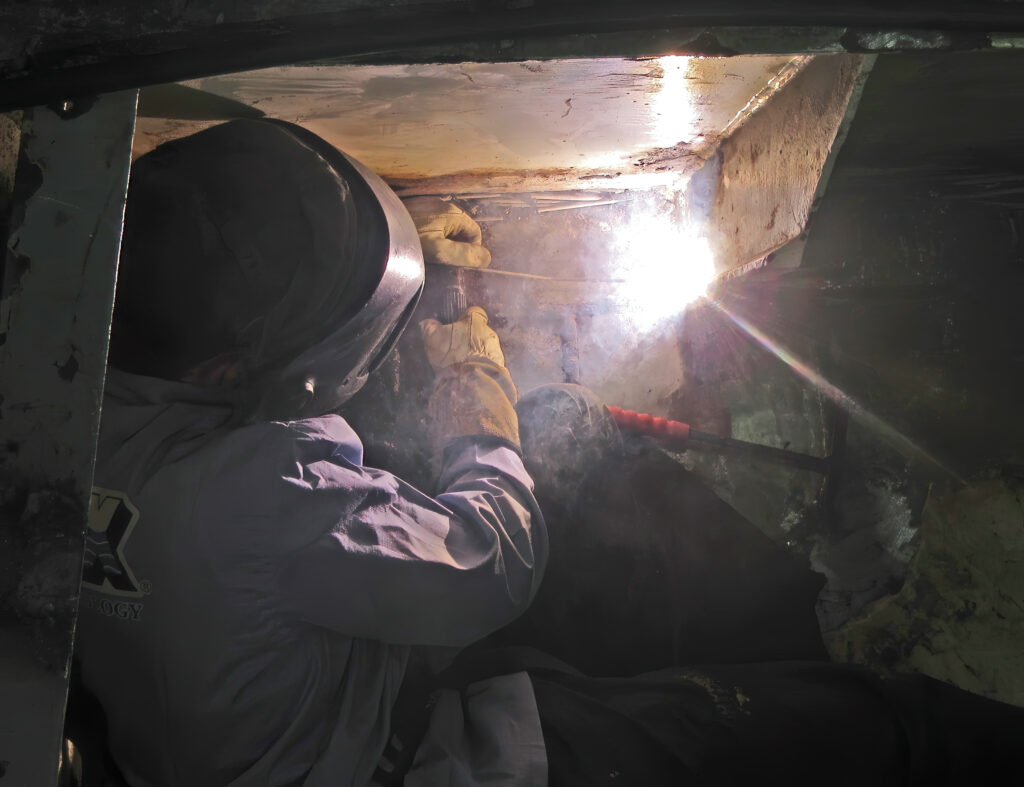
Crack repair in Zeebrugge
For smaller damage such as crack repairs, it is not always necessary to install a new insert. This was the case for a 229-meter car carrier in Zeebrugge, Belgium that had a leak in its forepeak ballast tank. As our fast response centers have a large stock of state-of-the-art equipment ready, mobilization for smaller operations like this can be almost immediate.
When the work area was certified gas free, our divers started the operation with an inspection of the damaged area on both sides of the hull. Next the team installed a cofferdam on the outside of the hull. This allowed them to perform work on the crack inside the ballast tank without water ingress.

The team then removed part of the longitudinal frame to gain access to the crack and take the exact measurements. The crack was ground out over its entire length and filled with our class approved full penetration welding.
The repair was inspected by an independent inspector and approved by the attending class surveyor. Our team concluded the repair by reinstalling the frame and removing the cofferdam.
As a result of this temporary repair the owner of the vessel did not have to go off schedule for an emergency visit to drydock but could make arrangements for a follow up repair at a more convenient time and location.
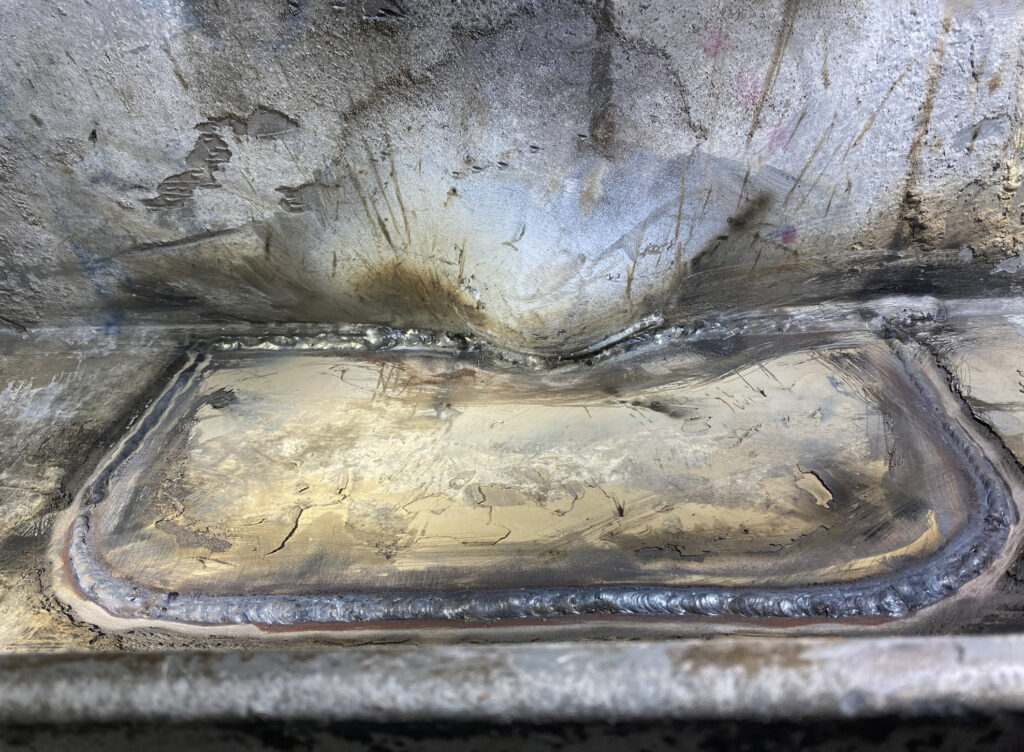
Conclusion
We have the know-how and experience needed to find the best solution for any problem you might encounter with your ships. This can be a simple routine repair or a unique complex one, as illustrated by these case studies.
All repairs are performed to the highest technical standards by our teams following in-house developed procedures. These operations are approved by the major classification societies. Our goal is to keep you sailing with no delay.
If ever you need assistance with the underwater part of your vessel, give us a call. We can then tell you if the repair is feasible and start working on its handling.
+32 3 213 53 00
hydrex@hydrex.be
Click on the images below for more case studies.

Underwater repair of leaking seal assembly in Trinidad

Underwater bow thruster removal and reinstallation in Australia
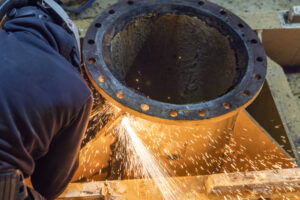
Scrubber overboard pipe repairs in Belgium and the Netherlands

Insert installation in Uruguay prevents loss of contract

Double stern tube seal repair on second vessel in Tasmania confirms customer’s trust
